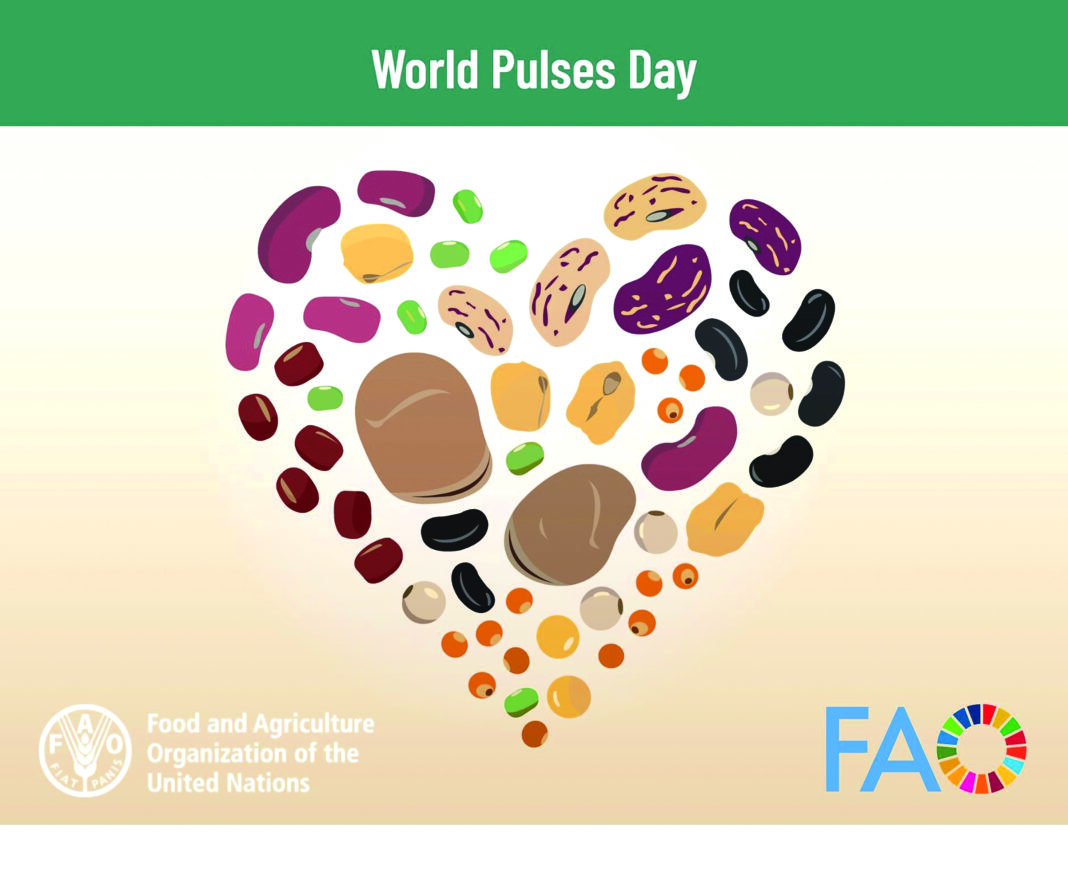By Abebe Haile-Gabriel and Yurdi Yasmi
Today 733 million people are food insecure. That means one in eleven people are facing hunger across the world. In Africa, that number is one in five. If the current trends continue, 582 million people will still be chronically undernourished by 2030. That is the year by which we aspire to achieve the Sustainable Development Goals (SDGs), including SDG 2: Zero Hunger.
Our work at the UN’s Food and Agriculture Organisation (FAO) is strategically designed to contribute to the SDGs through better production, better nutrition, a better environment and a better life, leaving no one behind. In these endeavours, pulses offer hope. The sustainable production and consumption of these dried edible seeds of leguminous plants – which include lentils, beans, chickpeas and cowpeas – can help transform our agrifood systems.
In 2022, close to 96 million tonnes of pulses were produced worldwide, with an average global per capita consumption of 7 kg per year. Due to their environmental and health benefits, pulses are expected to continue gaining importance in both farms and diets. By 2032, global pulse production is forecast to increase to 125 million tonnes, with average global per capita consumption reaching 8.6 kg per year.
Harness the power of pulses
Pulses are an important and generally affordable source of protein. In regions where meat and dairy are not easily accessible, pulses provide communities with much-needed protein. Pulses are low in fat and rich in soluble fibre, vitamins and minerals, which can lower cholesterol and help control blood sugar. They can also help prevent and manage diseases such as diabetes and heart conditions.
What makes pulses remarkable is their unique ability to convert atmospheric nitrogen into natural fertilizer and unlock phosphorous bound in soil, which reduces the need for synthetic fertilizers. As farmers face rising input costs, these natural traits make pulses ideal for sustainable farming.
When integrated into farming systems, pulses promote soil carbon sequestration and help break pest and insect cycles naturally. As cover crops or in intercropping systems, they protect against soil erosion while increasing overall productivity. By diversifying cropping systems with pulses, farmers can more efficiently use natural resources, such as light, water and nutrients, while increasing yields.
10 February is World Pulses Day
In recognition of the significance of pulses for our diet, nutrition, environment and economy, the UN General Assembly proclaimed 10 February as World Pulses Day, endorsing a proposal by Burkina Faso. Since 2018, World Pulses Day has been celebrated globally, providing an opportunity to raise awareness, promote collaboration, leverage innovation and increase investments to make pulses accessible to all.
The UN Food and Agriculture Organisation has been collaborating with member states and partners through multifaceted approaches in supporting farmers to access high-quality seeds, modern cultivation techniques, sustainable farming practices, and enhanced pulses value-chains, among others.
In Malawi for example, pigeon peas (Cajanus cajan) provide a valuable source of protein for local communities. At the same time, its stems can serve as material for sustainable fuel, addressing both food security and energy needs. FAO supports farmers to adopt sustainable practices that restore degraded lands while improving both livelihoods and productivity. In one of our projects supported by the Global Environment Facility (GEF), we are aiming to reach 150,000 Malawians – half of whom are women.
Beyond Malawi, the programme aims to benefit one million people globally and transform 12 million hectares of drylands. This model is just one example of how pulses help us achieve food security and environmental sustainability.
How to get involved
Together we can contribute to a sustainable food future by incorporating more pulses into our diets and supporting local pulse producers. Farmers can explore intercropping pulses with other crops to enhance soil health and productivity, while policymakers can strengthen support for pulse production and processing.
FAO’s Guide to World Pulses Day 2025 offers many ways to get involved, raise awareness and promote long-lasting change – from trying new pulse-based recipes to educating children about healthy diets in schools or bringing people together to celebrate these versatile crops.
As FAO marks its 80th anniversary, we recognize that transforming our agrifood systems requires traditional wisdom and modern innovation – pulses offer both.
On 10 February and throughout the year, let’s harness the power of pulses to build more efficient, inclusive, resilient and sustainable agrifood systems and ensure no one goes hungry.
Happy World Pulses Day!
Abebe Haile-Gabriel is the Food and Agriculture Organization of the United Nations (FAO)’s Assistant Director-General while Yurdi Yasmi is the Regional Representative for Africa and FAO Director of the Plant Production and Protection Division.
Resources:
Guide to World Pulses Day 2025
Share your thoughts online using the hashtag #WorldPulsesDay
Summary
- Our work at the UN’s Food and Agriculture Organisation (FAO) is strategically designed to contribute to the SDGs through better production, better nutrition, a better environment and a better life, leaving no one behind.
- In recognition of the significance of pulses for our diet, nutrition, environment and economy, the UN General Assembly proclaimed 10 February as World Pulses Day, endorsing a proposal by Burkina Faso.
- Guide to World Pulses Day 2025 offers many ways to get involved, raise awareness and promote long-lasting change – from trying new pulse-based recipes to educating children about healthy diets in schools or bringing people together to celebrate these versatile crops.

Your Trusted Source for News and Insights in Lesotho!
At Newsday Media, we are passionate about delivering accurate, timely, and engaging news and multimedia content to our diverse audience. Founded with the vision of revolutionizing the media landscape in Lesotho, we have grown into a leading hybrid media company that blends traditional journalism with innovative digital platforms.






